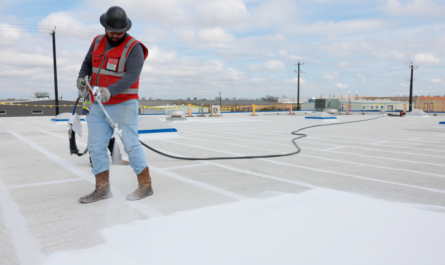Ammonium nitrate is a chemical compound with the formula NH4NO3. It is a white crystalline solid and is highly soluble in water. Ammonium nitrate has a wide variety of industrial uses but is also notorious for being unstable and potentially explosive if contaminated or confined.
Properties and Production
Ammonium nitrate is produced commercially by neutralizing ammonia with nitric acid. It is a salt made up of the ammonium cation (NH4+) and the nitrate anion (NO3-). In its pure form, it is colorless and odorless. However, it usually appears white in commercial formulations due to impurities. Ammonium nitrate is classified as an oxidizing agent and is sparingly soluble in common organic solvents but highly soluble in water. Around 22 million tonnes of ammonium nitrate are produced globally each year for various agricultural and industrial uses.
Agricultural Use
By far the largest use of ammonium nitrate is as a fertilizer for agriculture where it provides a readily available source of nitrogen for plant growth. As a fertilizer, it is notable for its high nitrogen content, with a typical analysis of 34% nitrogen content. When applied to soils, the nitrogen is converted to nitrate and ammonium ions and utilized by plants. Ammonium nitrate based fertilizers are widely used globally for applications on crops like corn, wheat and other grains to boost yields.
Explosive Use
During the nineteenth and early twentieth centuries, Ammonium Nitrate found use as an explosive for mining and other blasting purposes due to its powerful oxidizing nature when mixed with fuel oils. While it was replaced by more powerful mixed ammonium nitrate-fuel explosives, it still occasionally sees some limited use in the explosives industry today, often in mixtures with other materials like aluminum powder.
Industrial Uses
In addition to fertilizer and explosive uses, ammonium nitrate has found several other important industrial applications due to some of its unique chemical properties:
– Coolant: Liquid ammonium nitrate is used as a cooling fluid and heat absorber for things like nuclear reactors.
– Oxidizing Agent: It acts as an economical oxidizing agent in industrial processes like waste treatment, metal processing and the manufacture of other nitrogen compounds.
– Niche explosives: Specialized emulsions containing ammonium nitrate continue to be used for specialized blasting applications in mining, construction and demolition.
– Propellants: Some solid rocket propellants utilize ammonium nitrate as an oxidizer, though its use in these applications has declined.
Hazards of Ammonium Nitrate
While ammonium nitrate has enabled many useful industrial processes and applications, it also possesses inherent instability and explosive potential if not properly managed or stored. Some of the key hazards that must be accounted for include:
– Explosive decomposition: Ammonium nitrate is capable of undergoing an explosive thermal decomposition if heated above its melting point of around 169°C. This can cause fires or even detonations if confined.
– Catalytic decomposition: Strong acids, combustible chemicals or other contaminants can catalyze the thermal decomposition of ammonium nitrate at lower temperatures.
– Dust explosions: Finely divided ammonium nitrate dust particles suspended in the air may explosively combust if an ignition source is introduced. This scenario has led to some major industrial accidents.
– Self-accelerating decomposition: Under confinement, the heat from ammonium nitrate’s decomposition can cause adjacent material to decompose in a self-accelerating reaction with explosive force. This is of concern in large scale storage facilities.
Major Incidents Involving Ammonium Nitrate
There have been several major fires and explosions at industrial facilities and storage areas where large quantities of ammonium nitrate were present. Here are some notable examples:
– Texas City Disaster (1947): The largest industrial disaster in Texas history involved the detonation of around 2,300 tons of ammonium nitrate aboard a cargo ship, killing over 500 people.
– Oppau Explosion (1921): Around 550 metric tons of ammonium nitrate stored at a BASF facility in Germany detonated with the force of a small earthquake, leaving 559 dead.
– West Fertilizer Explosion (2013): An explosion involving around 270 tons of improperly stored ammonium nitrate-based fertilizer in West, Texas devastated part of the town and killed 15 people.
– Beirut Explosion (2020): A massive ammonium nitrate explosion in the Port of Beirut, Lebanon was triggered by a fire in a warehouse containing roughly 2,750 tons of confiscated chemical. Over 200 people were killed and thousands injured.
Regulation of Ammonium Nitrate
Many governments and industrial safety organizations have long recognized the hazardous nature of ammonium nitrate. Regulations around its manufacture, storage and transportation aim to prevent conditions where a thermal explosion can occur. Key requirements include separation from combustible or catalytic materials, controlling temperatures during production and transport, limiting pile sizes, restricting public access, and proper security at storage facilities. However, major industrial accidents continue to happen when regulations are not sufficiently followed or enforced.
Ammonium nitrate is a commercially vital but hazardous industrial chemical requiring careful handling and regulation. Though used mostly as a fertilizer, it retains the potential for devastating explosions if not properly managed or stored. Greater controls and oversight are needed globally to help minimize future tragedies.
*Note:
1. Source: Coherent Market Insights, Public sources, Desk research
2. We have leveraged AI tools to mine information and compile it



